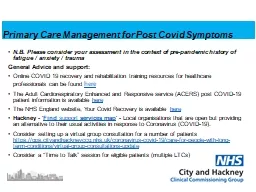PPT-The Management of Primary
Author : desha | Published Date : 2022-06-15
Aldosteronism Case Detection Diagnosis and Treatment An Endocrine Society Clinical Practice Guideline J Clin Endocrinol Metab May 2016 amp Screening for Endocrine
Presentation Embed Code
Download Presentation
Download Presentation The PPT/PDF document "The Management of Primary" is the property of its rightful owner. Permission is granted to download and print the materials on this website for personal, non-commercial use only, and to display it on your personal computer provided you do not modify the materials and that you retain all copyright notices contained in the materials. By downloading content from our website, you accept the terms of this agreement.
The Management of Primary: Transcript
Download Rules Of Document
"The Management of Primary"The content belongs to its owner. You may download and print it for personal use, without modification, and keep all copyright notices. By downloading, you agree to these terms.
Related Documents














